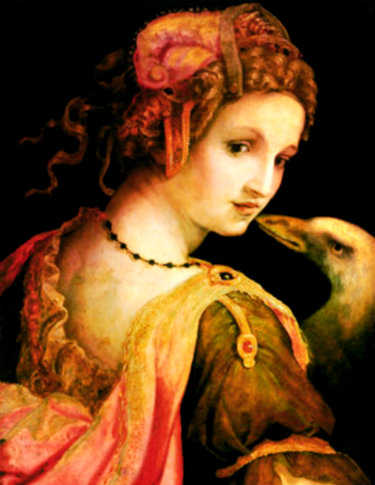The History of Art And The Curious Lives of Famous Painters
|
||||
 |
||||
|
About The High Renaissance Period Artists
of the Renaissance were elevated in social standing and their
art was no longer looked upon as simple handicrafts, but as divinely
inspired creations. The spirit of an era awoke, revitalized with
knowledge and creativity. Distinguished author and historian, Clive Bell points out The major painters of the Renaissance were not only artists but men of great genius who gave the world their great intellectual gifts. Florentine and Venetian painting were both formed by extraordinary personalities. These men tackled mathematical, artistic and philosophical problems of the highest interest, and presented solutions that have never lost their value. Baldassare Castiglione, the great Italian Writer of the High Renaissance advised painters, "Employ in everything a certain casualness which conceals art and creates the impression that what is done and said is accomplished without effort and without its being thought about. It is from this, in my opinion, that grace largely derives." The sense of humanism pervading renaissance painting is still palpable. The painters touched on a multitude of issues regarding the human condition - death, love, reason, religion, universal morality, social problems.
Until the Middle Ages men regarded themselves as following the Good Shepherd, and art consequently did not recognize the individual in particular. In the structure and position of the figures, as in their expression, a general and uniform type of beauty prevailed. The early Renaissance marks the victory of individualism and the uncompromising prominence of he individual. According to Renaissance historian Walter Pater "Here, artists and philosophers and those whom the action of the world has elevated and made keen, do not live in isolation, but breathe a common air, and catch light and heat from each other’s thoughts. There is a spirit of general elevation and enlightenment in which all alike communicate. The unity of this spirit gives unity to all the various products of the Renaissance; and it is to this intimate alliance with the mind, this participation in the best thoughts which that age produced, that the art of Italy in the fifteenth century owes much of its grave dignity and influence.."
|
||||
|
Key Descriptive Words and Phrases associated with the Renaissance Movement - rebirth, rediscovery of the classical world, publication of Della Pittura, a book about the laws of mathematical perspective for artists, sfumato, chiaroscuro, spiritually significant, illuminated manuscript, idealized biblical themes, scriptorium, illuminator, plague, Age of Discovery, curiosity about the natural world, realistic use of colours and light, Old Testament stories, ethereal and vaporous surroundings, Gospel parables, romanticized landscapes, Christian symbolism. Require more facts and information about Ridolfo Ghirlandaio and the artists of the renaissance era? Poke around every nook and cranny of the known universe for information this subject. Search Here © HistoryofPainters.com If you like this page and wish to share it, you are welcome to link to it, with our thanks. If you feel you have worthwhile information you would like to contribute we would love to hear from you. We collect essential biographical information and artist quotes from folks all over the globe and appreciate your participation. When submitting please, if possible, site the source and provide English translation. Email to millardmulch@gmail.com |